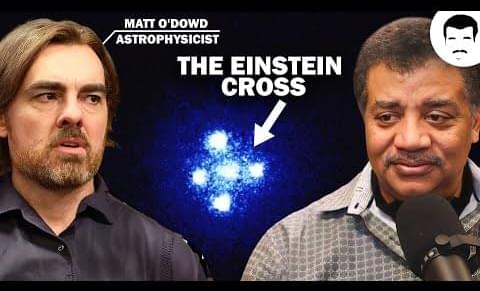Apr 15, 2024
The Universe Could Be Eternal, According to This Controversial Theory
Posted by Arthur Brown in category: space
The idea of a static universe would mean our cosmos is eternal, and it isn’t expanding after all.
The idea of a static universe would mean our cosmos is eternal, and it isn’t expanding after all.
For the first time, astronomers have measured the speed of fast-moving jets in space, crucial to star formation and the distribution of elements needed for life.
The jets of matter, expelled by stars deemed ‘cosmic cannibals’, were measured to travel at over one-third of the speed of light — thanks to a groundbreaking new experiment published in Nature today.
The study sheds new light on these violent processes, making clever use of runaway nuclear explosions on the surface of stars.
Last September, the James Webb Space Telescope, or JWST, discovered JWST-ER1g, a massive ancient galaxy that formed when the universe was just a quarter of its current age. Surprisingly, an Einstein ring is associated with this galaxy. That’s because JWST-ER1g acts as a lens and bends light from a distant source, which then appears as a ring—a phenomenon called strong gravitational lensing, predicted in Einstein’s theory of general relativity.

Astronomers have produced the largest 3D map of the universe, which can be explored in an interactive VR video. In the process, they’ve uncovered some tantalizing hints that our understanding of physics, including the ultimate fate of the cosmos, could be wrong.
The Dark Energy Spectroscopic Instrument (DESI) is a huge international project to map out the universe in three dimensions, which began collecting data in 2021. This early version of the map only includes data collected during the first year – 5.7 million galaxies and quasars out of the planned goal of 40 million. This data allows the scientists to peer as far as 11 billion light-years into deep space and time, providing a glimpse into the very early universe with an unprecedented precision of less than 1%.
Continue reading “Video: Largest 3D map of the universe reveals hints of new physics” »

The laws of nature or physics are assumed to be everywhere the same, on the far side of the universe as sure as on the far side of your house. Otherwise science itself could not succeed. But are these laws equally constant across time? Might the deep laws of physics change over eons of time? The implications would be profound.
Free access to Closer to Truth’s library of 5,000 videos: http://bit.ly/376lkKN
Continue reading “Lee Smolin — Are the Laws of Nature Always Constant?” »

Neil deGrasse Tyson and Matt O’Dowd discuss their favorite scientific discoveries in astrophysics and the universe, as well as their roles as science communicators and teachers Questions to inspire discussion What do Neil deGrasse Tyson and Matt O’Dowd discuss in the video? —They discuss their favorite scientific disco.
By analyzing the data from ESA’s Gaia satellite, Chinese astronomers have detected a new tidal stellar stream in the northern hemisphere, which has a low metallicity and a relatively high energy. The finding was reported in a research paper published April 1 in The Astrophysical Journal.
In the constellation Virgo, 700 light years away from Earth, the planet WASP-39b orbits the star WASP-39. The gas giant, which takes little more than four days to complete one orbit, is one of the best-studied exoplanets. Shortly after its commissioning in July 2022, NASA’s James Webb Space Telescope turned its high-precision gaze on the distant planet.
Fast radio bursts (FRBs) represent the most intense radio explosions in the universe. Since the first discovery in 2007, FRBs have garnered significant attention, culminating in the 2023 Shaw Prize in Astronomy. With yet unknown origin, these extreme cosmic bursts are among the most enigmatic phenomena in astronomy as well as physics.